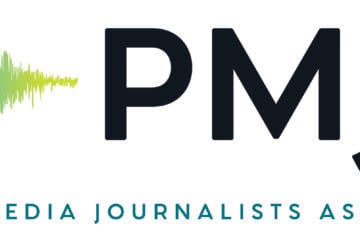FCC reps tell CPB board of growing interest in spectrum auction
WASHINGTON, D.C. — An increasing number of public broadcasters have been contacting the FCC in recent weeks for information about participating in the upcoming spectrum auction, according to commission representatives who spoke at a CPB board meeting here Tuesday.
The uptick began after an Oct. 1 report by investment banking firm Greenhill & Co. projected massive paydays for television stations if they sell spectrum to wireless carriers in next year’s congressionally mandated auction.
Most pubTV stations, the representatives said, have been asking the FCC for details about transitioning from UHF to VHF channels. Doing so would provide stations with a payout but would also require over-the-air viewers to return to old-fashioned rabbit-ear antennae and may increase interference. About 19 percent of U.S. television households rely exclusively on over-the-air broadcasting, according to CPB.
“A pair of rabbit ears may well be sufficient to overcome interference” on high VHF channels, said Howard Symons, vice chair of the FCC’s incentive auction task force. “And the cash payment to stations would be sufficient to buy rabbit ears for viewers. There’s a lot of money involved.”
The idea of purchasing antennae for viewers is “offensive,” responded Lori Gilbert, CPB board vice-chair and a commercial news broadcaster in rural Elko, Nev. “You don’t understand the limits of the technology. I’m not trying to be rude. . . . I want you to understand that we are important to this equation.”
Symons, along with Gary Epstein, chair of the auction task force, and William Lake, FCC broadcast bureau chief, made clear to the board that FCC Chair Tom Wheeler “is very sensitive to and aware of the importance of public broadcasting for education and information,” Symons said. But the three also stressed that the auction is a lucrative opportunity for public TV.
The “very substantial amounts of money” available could actually create a “much stronger” public broadcasting system, Lake said.
Brent Nelsen, chair of the CPB board’s spectrum committee, said that public broadcasters remain concerned about the potential for white spaces, or areas without public TV signals, after spectrum repacking. The Association for Public Television Stations, PBS and CPB asked the FCC in September to change its spectrum auction rules to bar public TV stations in single-provider markets from participating.
“We want to get through this without anyone losing access,” Nelsen said.
But the FCC is “very reluctant” to forbid any station from participating, Epstein said, because Congress has mandated that spectrum be cleared through the auction process. He said the commission wants to work with CPB to identify sole-provider stations and “look for a solution utilizing the tools we have.”
“We have a year to educate broadcasters,” Symons said. “We can identify where potential problems are and what creative solutions we can come up with. Let’s focus on ways to work together.” After the auction, for example, “if white space is created, we could look at ways to find a new channel to reserve as noncommercial in that market.”
Part of the education process, Symons said, is a series of FCC field visits to 50 markets from January through April. The commission is sponsoring town hall meetings and individual meetings with station executives, in addition to webinars and conference calls. Symons said that stations must request visits.
Gilbert brought up another concern among pubcasters: Translators — vital to many rural stations — receive no protection under FCC auction rules.
“You’re talking about if there are white spaces, there are millions of people who will be without free over-the-air service” after the auction, Gilbert said. “Spectrum belongs to the American public. This is a grab for an extremely valuable and finite resource, an amenity that you are auctioning off to the highest bidder.”
Local citizens “invested millions of dollars for translators during the digital conversion with confidence that the TV signals would be there,” she added. “This auction and repacking are undermining that community investment.”
As a rural broadcaster, Gilbert said, she feels like “a tiny ant waiting to be crushed by the FCC. But I represent an army of angry red ants. And I want Chairman Wheeler to understand that. I understand your congressional mandate. And we’re not trying to complicate your job. But it’s evident that you don’t have the information you need to make wise decisions to benefit all Americans.”
“I assure you we are very aware of the translator issue,” Lake said. Congress made the decision that translators would not be protected under repacking, he noted. “But that doesn’t mean we won’t do everything we can” to preserve those signals.
Board members also questioned figures in the Greenhill report. “There are those who think the FCC calculations were somewhat inflated to attract attention,” said Bruce Ramer, a Los Angeles attorney.
“We stand by the numbers in the report as high-end estimates,” Symons said, used to “illustrate the economic potential of the auction.” FCC economists, not Greenhill, provided the figures, he noted.
The FCC will soon release the methodology that will be used to set opening bid prices, Symons said.







Any station that wants to move from UHF to VHF are idiots, greedy idiots perhaps, but idiots none the less. As an Over The Air viewer I can say that unlike w/ the old analog signals where VHF stations were generally easier to receive, in the new digital world VHF signals are markedly weaker than UHF signals. I live in a fringe area (Central Massachusetts) where a move to VHF by any station would likely mean I would no longer receive it. A pair of donated rabbit ears is not going to make VHF stations view able to anyone outside of the immediate metropolitan area of the station. After decades of declining use, Over The Air viewing is making a comeback as the Cable and Satellite companies roll out price hikes every few months and folks realize that no they don’t want to spend $100 a month on basic cable service.